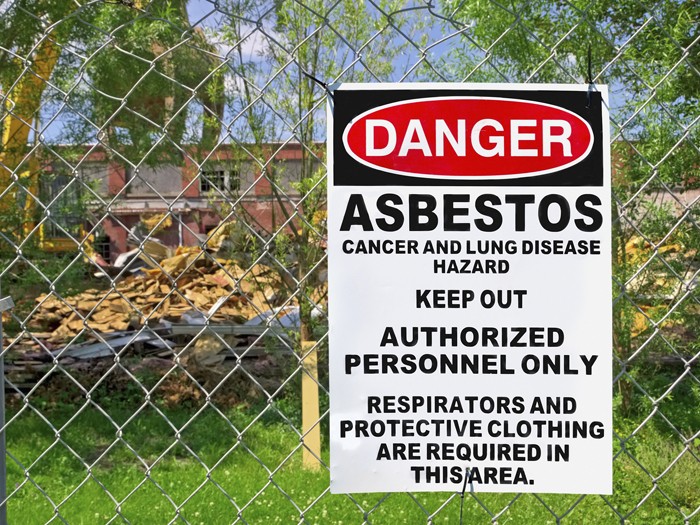Legacy Exposures
Asbestos Claims Dwindle, but Slowly

Claims demanding compensation for illnesses caused by working around asbestos still haunt employers who struggle to determine whether insurance coverage exists for exposures alleged to have occurred decades ago.
The claims no longer surface in the mass quantities like they did a couple decades ago when workers from industries such as construction, oil and gas, boiler and automotive parts manufacturing filed claims alleging mesothelioma and asbestosis.
But neither have asbestos claims entirely disappeared as former workers or their survivors continue filing claims either in civil courts, through workers’ comp systems, or in bankruptcy proceedings. Advertisements by attorneys seeking plaintiffs suffering from asbestos-related lung disease remain common on television and on the internet.
“We thought the issue of asbestos would have gone away 10 years ago, but there are just more and more,” said Paul D. Braun, managing director, casualty risk consulting at Aon Global Risk Consulting.
From about the 1930s through the 1960s, workers labored in textile mills and power plants where asbestos products were either manufactured or used in building construction products, said Jeffrey A. Kadis, a workers’ comp expert specializing in defending occupational disease and chemical exposure claims at Hedrick Gardner Kincheloe & Garofalo LLP in in Charlotte, North Carolina.
That created opportunities for claimant attorneys to generate mass numbers of claims with their volume peaking during the 1990s and early 2000s because of a decades-long latency period for asbestos exposure illnesses, Kadis said.
“We thought the issue of asbestos would have gone away 10 years ago, but there are just more and more,” —Paul Braun, managing director, casualty risk consulting, Aon Global Risk Consulting
While the number of claims peaked back then, his firm still sees one every two weeks or so, Kadis said.
“The volume has definitely decreased, but they have not gone away altogether by any means,” he added.
A lawsuit three former workers filed against BNSF Railway on June 3 in Portland, Oregon, provides an example of case characteristics observers say are common among recently filed claims.
The three say in their Federal Employers Liability Act (FELA) claim that they suffer from lung disease due to asbestos exposure that occurred while working for railroads beginning in the late 1950s and 1960s. Their employment continued until 2003 and 2004, said Paul S. Bovarnick, of counsel at Rose, Senders & Bovarnick in Portland.
FELA is a tort statute providing an exclusive remedy for railroad workers injured on the job.
“We have filed not only this case, but over the last two years about six or eight other [similar] cases,” Bovarnick said. “We file a new set of cases every 4 to 6 months.”
Successive railroad mergers or acquisitions occurred throughout the three workers’ employment and BNSF eventually became their final employer, Bovarnick said. Now the workers allege BNSF was negligent in failing to provide a safe workplace.
The case is similar to many other recent asbestos claims filed nationwide in that the claimants allege lung disease, sources said. Many of the recent claims allege exposure in the 1970s.
Additionally, it’s common for recent claims to allege exposures that occurred at companies that no longer exist, but whose assets and liabilities were passed along through successive mergers and acquisitions.
In some cases the existing employers did not know that they had acquired companies, or parts of companies, that had asbestos exposures, Braun said. The current company may not even possess employment records from companies they acquired after successive mergers dating back to the decades plaintiffs allege they were employed.
The factors make it difficult for companies to establish if any insurance policies in force at the time of the workers’ employment provide coverage, Braun said.
Workers’ comp policies commonly contain sunset clauses stating that for coverage to apply, claims must be filed within 36 months or so of an injured worker’s employment. General liability policies began excluding coverage for asbestos in the 1980s and also exclude coverage for employees, Braun said.
“That is the dilemma the clients are looking at right now,” he said.
Other coverages, such as old umbrella policies, if they can be recovered, may provide some insurance, Braun added.
As time marches on, however, observers say the claims are less of an issue in many current mergers and acquisitions, including the purchase of manufacturing operations.
Because asbestos has not been used in product manufacturing or factory construction in decades, the risk continues to dwindle while experts conducting due diligence for today’s acquisitions understand the risk better than in past years, said Henry Jennings, global practice leader for Lockton’s private equity and corporate acquisitions practice.
“My experience lately is that we are seeing much less of it than we did years ago,” Jennings said. “If we do see it, it is more than likely that the legal people at the firm being sold have their arms around it from the standpoint of whether insurance is involved.”











